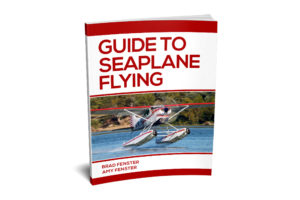Seaplane Training Frequently Asked Questions
Below are some general questions that are commonly asked. Questions specific to a course are included under each course page.
Yes. We requires pilots to have at least a single engine land rating prior to seaplane training.
If training for your commercial certificate, you must meet the minimum FAA requirements for a commercial (fixed-wing) pilot.
- Private certificate or higher
- Passed commercial airplane knowledge test
- 250 hours total flight time
- 100 hours in powered aircraft
- 50 hours in airplane
- 100 hours as pilot in command
- 50 hours as pilot in command in airplanes
- 50 hours cross country as pilot in command
- 10 hours cross country as pilot in command in airplanes
- 20 hours of cross-country training
- 10 hours of instrument-flight training
- 5 hours of instrument flight training in an airplane
- 1 cross country flight of at least two hours in a single in airplane consisting of at least 100 nautical miles total distance.
- 10 hours of solo flight time in a single-engine airplane
- 1 solo cross-country flight of at least 300 nautical miles total distance. The flight must include a minimum of three points, with one leg of at least 250 nautical miles straight line distance.
- 5 hours of solo night VFR flight with 10 landing and 10 takeoffs.
NOTE: You will obtain 10 hours of complex time and 3 hours of test preparation during the long-course versions of our training.
No, if you select our 10-hour training options. Our Cessna 185 on amphibious floats is considered a complex aircraft for SEL and SES.
Technically yes. However, we do not provide initial flight training in our seaplane. The primary reason is the cost would be significant. If you would like to get your private pilots license, please contact our friends at Apollo Aviation. Apollo Aviation provides airplane and helicopter flight instruction.
Some students arrive with more experience in high-performance aircraft and advanced flying. Unlike other schools that use smaller, less powerful, non-complex aircraft, we conduct our seaplane flight instruction in a high-performance Cessna 185 amphibious plane. With a 300 horsepower engine, constant speed propeller, and amphibious landing gear, some people need more training than others. For experienced pilots, it also gives a less expensive cost-per-hour if they would like to do additional flying.
We use a Cessna 185 on amphibious floats for our seaplane flight instruction. This aircraft is complex and more costly to operate. In addition, we train you to land the amphibious plane on runways as well as on the water.
We use the Cessna 185 for seaplane instruction because we also use the aircraft for tours and other operations. Due to the weight of the amphibious floats, we needed a larger aircraft to allow us to carry the pilot and three passengers. We also just love the Cessna 185. In addition, we wanted to give other people the opportunities to fly a Cessna 185.
Yes. We offer training by the our for people that already have a seaplane training.

